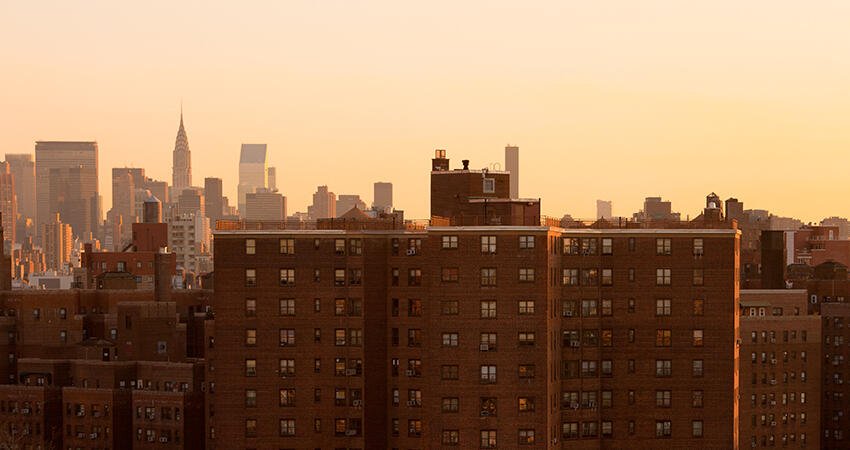
Jose Luis Stephens / Shutterstock
Did a Smoking Ban in New York City’s Public Housing Reduce Secondhand Smoke Exposure?
- Title:
-
Evaluation of Secondhand Smoke Exposure in New York City Public Housing after Implementation of the 2018 Federal Smoke-Free Housing Policy
- Author:
-
Lorna E. Thorpe, Elle Anastasiou, Katarzyna Wyka, Albert Tovar, Emily Gill, Ana Rule, Brian Elbel, Sue A. Kaplan, Nan Jiang, Terry Gordon, and Donna Shelley
- Source:
- Publication Date:
-
2020
Exposure to secondhand smoke has contributed to more than 480,000 fatalities nationwide and is the leading cause of preventable death. It can cause serious health conditions, ranging from cardiovascular disease to respiratory infections, that affect adults and children. Although secondhand smoke exposure drastically decreased over the past 30 years, one in four Americans are still exposed to secondhand smoke. People with low incomes and people of color face the greatest risk of secondhand smoke inhalation because of higher smoking rates and smoke accumulation in large multiunit apartment buildings. To curb exposure and reduce disparities, the US Department of Housing and Urban Development passed a smoke-free housing rule for public housing authorities across the United States. The New York City Housing Authority (NYCHA) implemented the policy in July 2018. This study evaluates the effect of the policy on the air quality and secondhand smoke exposure among residents in 11 high-rise NYCHA buildings one year after implementation and compares air quality before and after the policy change in 10 high-rise comparison Section 8 buildings also providing affordable housing to low-income residents but not subject to the policy.
The authors sampled the air quality of apartments and common areas of NYCHA and Section 8 buildings in Manhattan and the Bronx. All buildings chosen for the study met four criteria: they had more than 15 floors, more than 150 units, 80 percent of their residents were Black and Latinx*, and 20 percent of the residents were younger than 18. The researchers conducted a baseline assessment including smoking use and secondhand smoking exposure before and immediately after the rule change. They received 1,030 responses through telephone and door-to-door enrollment. Then, they repeatedly monitored the airborne nicotine concentration and inhalable particulate matter of 263 nonsmoking households for seven days before (December 2018 to March 2019) and after policy implementation (May to September 2019). Air quality was also monitored in randomly chosen hallways and stairwells.
Key findings:
- Before the housing ban’s implementation, nicotine concentrations were detected more frequently in NYCHA apartments (13.1 percent) than Section 8 apartments (5.5 percent). No significant reduction in nicotine concentration were found after implementation.
- Almost two-thirds (63.4 percent) of NYCHA residents reported secondhand smoke exposure before policy implementation, compared with 53.6 percent of Section 8 residents. The results after implementation indicated no significant change.
- In its first year of implementation, the smoking ban in NYCHA residences did not reduce levels of secondhand smoke exposure.
Policy implications:
- Policy compliance and enforcement could help overcome barriers to implementing smoke-free housing policies.
- Policymakers should consider investing in education to teach smokers about the risks to themselves and others and to help them quit, as well as in improvements to the environmental and structural health of buildings.
*We recognize that the term “Latinx” may be more inclusive of the way members of this group self-identify.


